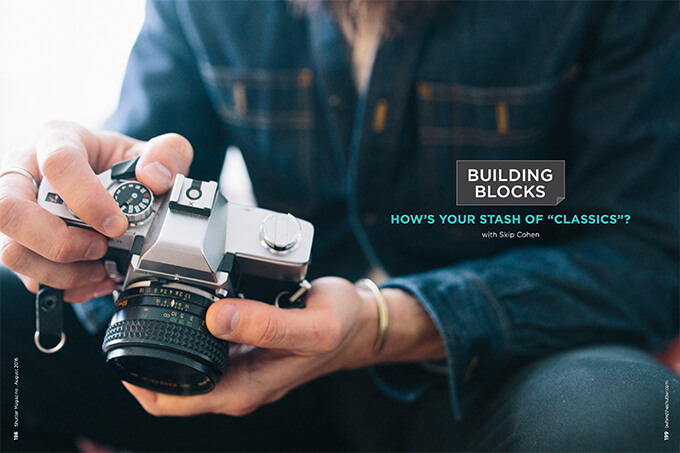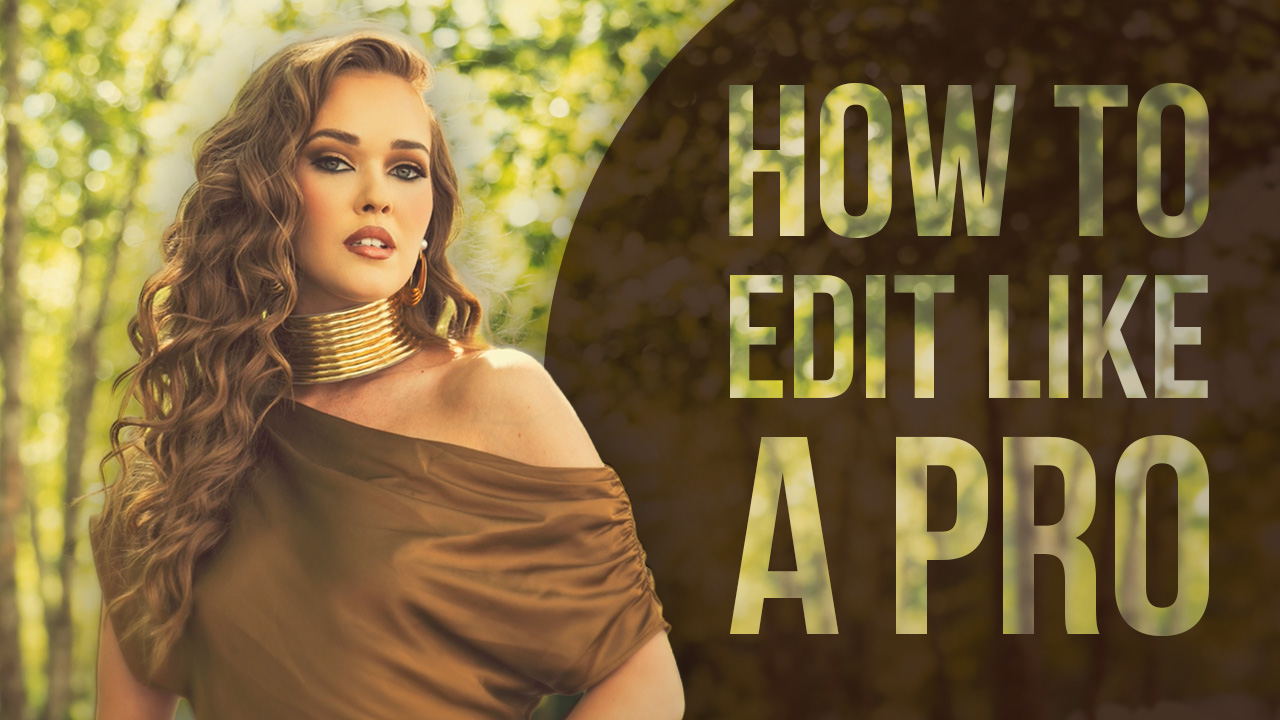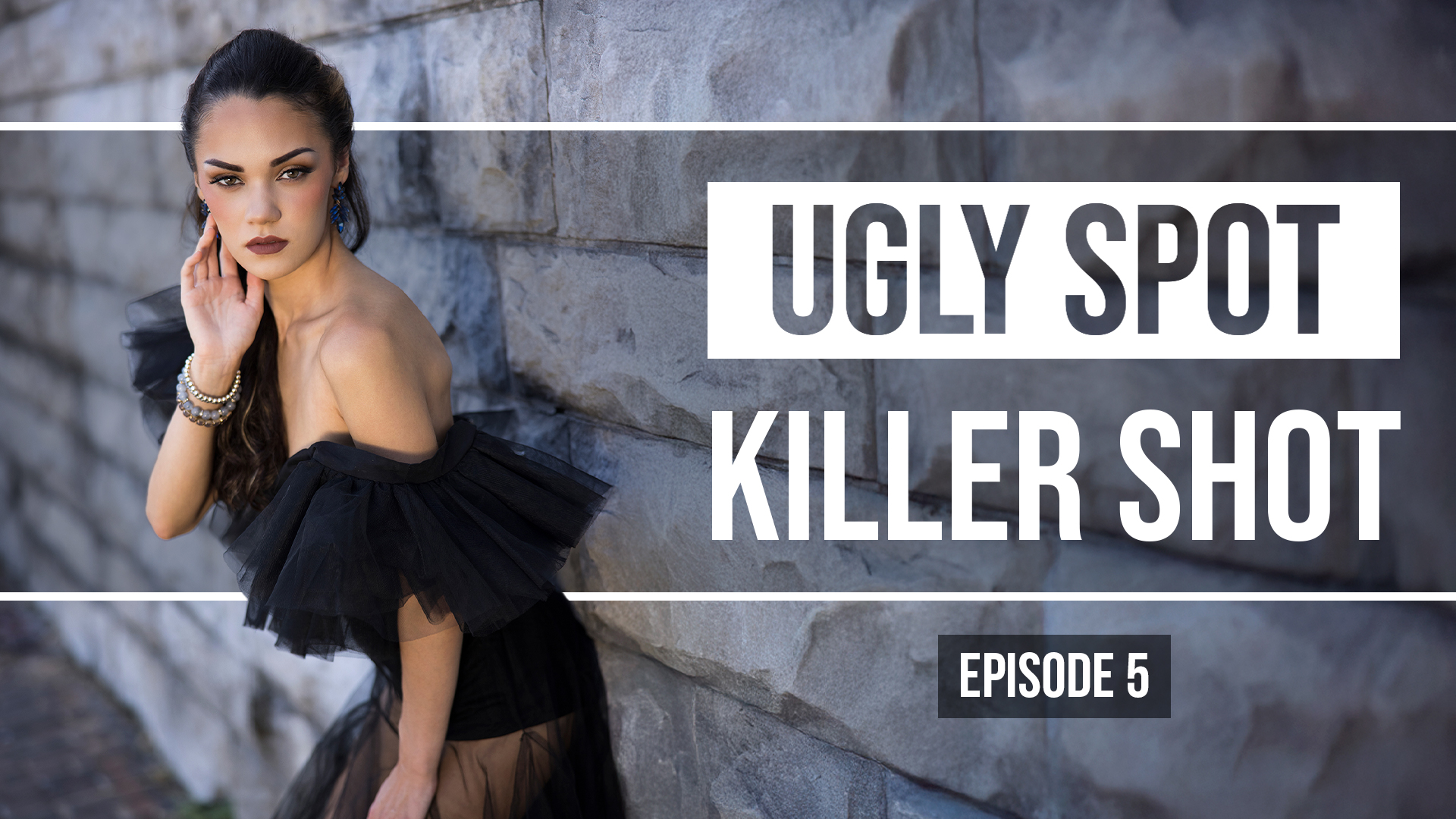How’s Your Stash of “Classics”? with Skip Cohen
We all know what people refer to when they describe something as being “classic.” Just to make sure we’re all on the same page, the dictionary defines it as being “judged over a period of time to be of the highest quality and outstanding of its kind.”
Recently I was at a classic car show. One of the most stunning cars was a 1937 Packard painted a beautiful candy-apple red. The owner spent seven years building it from parts he acquired from three different vehicles.
At the other end of the spectrum were several brand-new Corvettes. They were stunning, and their owners exhibited the same level of pride in the quality and workmanship as the Packard owner.
Classics never die. They resist the pressure of fads, trends and marketing, and they never get knocked off their pedestal. I thought it would be fun this month to talk about classics from a photography and business perspective.
Let’s see how many of these you have in your stash.
- Can you light and pose a traditional bridal portrait? It’s one of the strongest classics in professional photography. It’s what Justin and Mary Marantz refer to as “shooting for the silver frame.” At every wedding they photograph, they always look for that one image that’s so stunning it’s going in the silver frame on the mantle.
- Do your subjects feel you’ve captured who they are in a portrait? There’s that old expression about the eyes being the gateway to the soul. A classic portrait captures the essence of the subject. Classic posing plays a serious role in adding a level of flattering beauty to the image.
- Can you do a solid headshot? It’s a component of consistent bread-and-butter business. Every businessperson needs a good headshot, but can you meet a client’s expectations? Do you understand lighting, posing and composition?
- Can you tell the story of an entire event with your pictures? Obviously, this is about storytelling, which is especially effective in wedding coverage. But even a day-in-the-life session with a child needs a mix of images to tell the story. So, do you have an outline of how you want to tell the story in your head as you’re covering an event?
- How are your panning skills? It might not seem like a classic, but to me, it’s a skill set that’s a necessity, especially when photographing kids. It’s not used often, but being able to drag the shutter and pan a child on a bike for the first time is a classic.
- Let’s switch to classic skill sets: If there weren’t a “P” on the dial, could you shoot manually and know what you were doing? You might be laughing, but being able to play with depth of field and create stunning images that leave people staring at your work is a classic quality to have.
- Do you understand lighting? Short light, broad light, split light, butterfly light, modified loop light are all techniques the great portrait artists used to teach. They’re not only classics in themselves, but also important ingredients in creating classic portraits.
- What are you doing to build your reputation in the community? Seriously, what good is working to create great images if nobody knows who you are? Publicity, community involvement, relationship building are all part of making yourself a classic in business.
- How are your listening skills? The number-one challenge for every photographer is to meet the mindset of the client. It’s also one of the biggest complaints from clients who are disappointed in their photographs, especially brides. There’s a great line about your ears and mouth: “You’ve got two ears and one mouth, so listen twice as much as you talk.”
- How’s the diversity of your skill set when photographing subjects out of your core specialty? Let’s assume you’re a wedding photographer. How are your skills at children’s portraiture, close-up/macro work, maternity, etc.? In today’s competitive business climate, you don’t want to be a one-trick pony. It’s important to have an expanded skill set up your sleeve, allowing you to cover most challenges that come along.
- Is your approach to customer service classic or outdated, bordering on offensive? This classic category requires a fast response and minimal callbacks, and is never confrontational. A classic approach requires empathy, integrity and taking responsibility. Most importantly, it’s solution-driven.
- Do you have classic skills when it comes to meeting somebody? Too often the younger the photographer, the less competent they are at conversational basics. They don’t have a firm handshake. They don’t look you in the eyes when they’re talking and they can’t carry on a conversation.
- Are you classic in your appearance, decorum and presentation? Do people sense you’re dependable, trustworthy and professional? Will people you meet or work with say or tell others, “What a class act”?
- Appearance requires one more level of definition. I’ve seen young photographers who believe they always need to appear “real,” even to the point of wearing clothes they might put on to cut the lawn. Meeting with a client almost always requires a professional look. Most wedding photographers, for example, dress to fit in at the wedding and are usually in something more formal.
- Does your studio or office represent a level of classic organization? I’ve been in studios that look like an episode of Hoarders. You might consider meeting with clients at other locations. Better yet, clean up your office or studio.
Let’s switch from you and move over to your blog and website:
- Is your About page a classic? Your clients don’t care about the awards you’ve won, what gear you shoot with or how you got started. What they care about is whether or not you can be trusted to capture the kinds of images they want. They want to know why you love being a photographer.
- Are you showing classic quality in your galleries? Less is more. So many of you show too many images. Plus, you share images that anybody’s Uncle Harry could capture. Make every image is a “wow” print—meaning it’s so good you’d have to show only one image to get hired.
- Walk into a Nordstrom’s anyplace on the planet, and you’ll find a classic approach to retail and consistency. When people come to your website, is it easy to navigate? Is it easy to find what they’d like to see? Does your website give a sense of strength, identity and professionalism? Or is it like walking into a Big Lots on a close-out weekend?
- Do the graphic elements on your website and blog represent a classic approach to understanding your target audience? Women make 98 percent of photography purchase decisions in the portrait/social categories. Does your website reflect a classic look that meets the expectations of this audience?
- Are you classic in your approach to blogging? A great blog requires a level of commitment, and especially consistency. Is what you share even relevant? Do you post on a regular basis, at least twice a week? Are you helpful?
- Are you classic in your approach to your network? Do you give as much as you take? A great network requires care and feeding. You need to participate, and your friends and associates need to know they can count on you.
There’s a very thin line between looking at a classic level of performance as old-fashioned versus cutting edge. While some of my points are definitely old school, it’s hardly old-fashioned to be considered a class act.
Having a classic approach to business is about being the very best. It’s about outshining your competitors and building a level of trust with a potential client at the very first impression.




